‘The criticism that fashion and clothing are deceptive has two aspects. The first is that fashion and clothing are in the business of dressing something up as something else, that they take the body and disguise it or present it as something it is not.’[1]
This small extract from Fashion as Communication by Malcolm Bernard outlines a belief that fashion is a form deception, can act as a facade and hides the truth about the body and how it is seen by others.
I mainly disagree with this idea presented in Fashion as Communication as I believe fashion is consistently used as a form of self-expression and identity and without it, the world would be very bland and diversity amongst people and cultures would be limited. People choose how to dress as a method of portraying what kind of person they are and what they believe in (religiously and morally) through self-expression in the style, colour and shape of the clothes/garments they wear. I.e. wearing a dress/skirt to show femininity or tracksuits to show an interest in sport/fitness or even just a general appreciation for comfort and easy living (athleisure wear). “fashion provides one of the most ready means through which individuals can make expressive visual statements about their identities”[2]. Fashion is trivial for self-expression amongst most, if not all in society; regardless of age, gender or societal class. Everyone wakes up in the morning and selects an item of clothing they own for a reason even if they may not realise it. Expression through clothing is simple and usually subconsciously noted as it is such a huge part of the modern culture with social media like Instagram being a social staple, especially for the younger generation and new genre of designers.
To counteract this view, I somewhat agree that fashion can be a form of deception and ‘dressing something up as something else’. For an example, businessmen/women wear suits to present themselves as very put together, smart, someone of a middle to upper social class, wealthy and successful whereas anyone can appear as if they possess these attributes by merely selecting clothes that support this stereotype. Behind the suit, they may be having financial struggles, poor living conditions, family problems etc. Clothing does escalate the issue of not judging a book by its cover as it acts as another means to do so. Effectively, a homeless man could deceive the rest of society by having a sharp appearance and by wearing a suit as people would be none the wiser to his life beyond his appearance.
It can also disguise the body which is both positive and negative. It can offer support for those not comfortable in their bodies or wanting to hide a deformity, scar etc. However, it can also act as a shield for those with mental disorders affecting their health like eating disorders or self-harm.
Alternatively, most things can be seen as a form of deception; make-up, media, photographs, advertisements etc. “Our mission in Vogue’s fashion pictures is to inspire and entertain while showing the clothes created by many highly talented designers. They are created with this intention in mind, not to represent reality”.[3] So singling out fashion as something that takes the body and proceeds to ‘present it as something else’ seems far-fetched as photoshopped images appear everywhere and are of greater influence and risk on the perception of the body to people than fashion might be.
Bibliography
[1] Bernard M. [1996] 2nd Edition, Fashion as Communication, USA, Routledge
[2] Bennett A. (2005), Culture and Everyday Life, London, SAGE Publications Ltd. [Page 84 via E-book]
[3] Milligan L. (2013), The Myths Behind The Image, available from: http://www.vogue.co.uk/article/vogue-school-film-image-making-alexandra-shulman [accessed 24th November 2017]

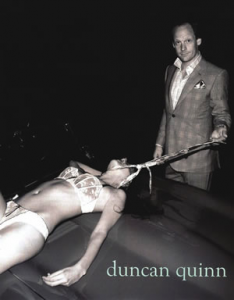
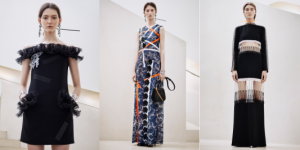

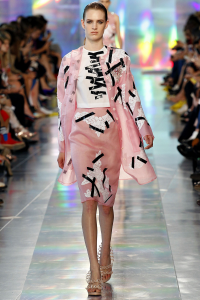

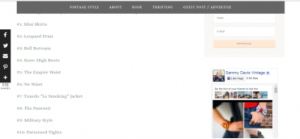
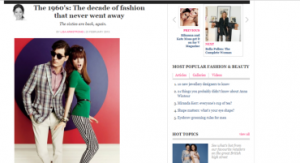
![Photograph of David Bowie by Brian Duffy in 1973 [1]](http://blog.soton.ac.uk/rcs/files/2017/10/Picture1-298x300.png)
![Photograph of Cara Delevingne in the Fay fashion show for SS13 by unknown [2]](http://blog.soton.ac.uk/rcs/files/2017/10/Picture2-200x300.png)
![V&A Museum, 1960’s Fashion in Gallery 40 [3]](http://blog.soton.ac.uk/rcs/files/2017/10/Picture3-300x137.png)